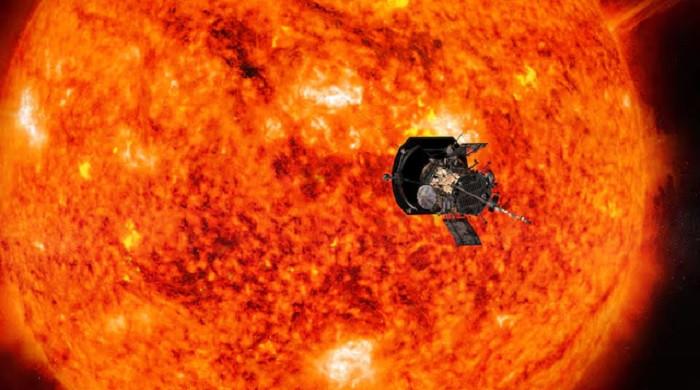Plasma eruptions accumulate one on the other, the solar wind which flows into exquisite details – the images closest to our sun are a gold mine for scientists.
Captured by the Parker solar probe during its closest approach to our star from December 24, 2024, the images have recently been published by NASA and should deepen our understanding of the space weather and help to protect itself against solar threats against Earth.
A historical achievement
“We have been waiting for this moment since the end of the 1950s,” said Nour Rawafi, scientist of the project for the Mission at Johns Hopkins Applied Physics Laboratory, said AFP.
The previous space vessels have studied the sun, but much further.
Parker was launched in 2018 and was appointed according to the late physicist Eugene Parker, who in 1958 theorized the existence of the solar wind – a constant flow of electrically charged particles which move away through the solar system.
The probe recently entered its final orbit, where its closest approach carries it only 3.8 million kilometers from the sun surface – an important step for the first time the day before Christmas 2024 and repeated twice from a cycle of 88 days.
To put the proximity in perspective: if the distance between the earth and the sun was measured at the foot, Parker would hover with only half a pump.
Its thermal shield has been designed to resist up to 2,500 degrees Fahrenheit (1,370 degrees Celsius) – but for the pleasure of the team, it has only known about 2000 ° F (1090c) so far, revealing the limits of theoretical modeling.
Remarkably, the instruments of the probe, just a meter (meter) behind the shield, remain a little more than the room temperature.
Watch the sun
The spacecraft carries a single imaging, the large field imaging of the solar probe (WISPR), which captured the data while Parker plunged through the crown of the sun, or the external atmosphere.
Sewn in a video of a few seconds, the new images reveal coronal mass ejections (CME) – massive bursts of loaded particles that cause space weather – in high resolution for the first time.
“We had several CMEs accumulating each other, which makes them so special,” said Rawafi. “It’s really incredible to see this dynamic happening there.”
Such eruptions triggered the widespread dawn seen in a large part of the world last May, while the sun reached the top of its 11 -year cycle.
Another striking characteristic is the way in which the solar wind, flowing from the left of the image, retraces a structure called helospheric current sheet: an invisible border where the magnetic field of the sun is transformed from north to south.
It extends through the solar system in the form of a swirling skirt and is essential to study, because it governs how solar eruptions spread and how much they can affect the earth.
Why it matters
Space weather can have serious consequences, such as overwhelming electrical networks, communications disruption and threatening satellites.
While thousands of other satellites enter orbit in the coming years, following them and avoiding collisions will become more and more difficult – especially during solar disturbances, which can cause a slightly drift of their planned orbits.
Rawafi is particularly enthusiastic about what awaits us, while the sun goes towards the minimum of its cycle, expected in five to six years.
Historically, some of the most extreme spatial weather events took place during this decreasing phase – including the famous Halloween solar storms in 2003, which forced astronauts aboard the international space station to shelter in a more armored area.
“Capturing some of these great huge eruptions … would be a dream,” he said.
Parker has much more fuel than engineers at the start and could continue to operate for decades – until its solar panels deteriorate to the point where they can no longer generate enough power to maintain the spaceship properly oriented.
When its mission finally ends, the probe will disintegrate slowly – becoming, according to Rawafi’s words, “part of the solar wind itself”.




